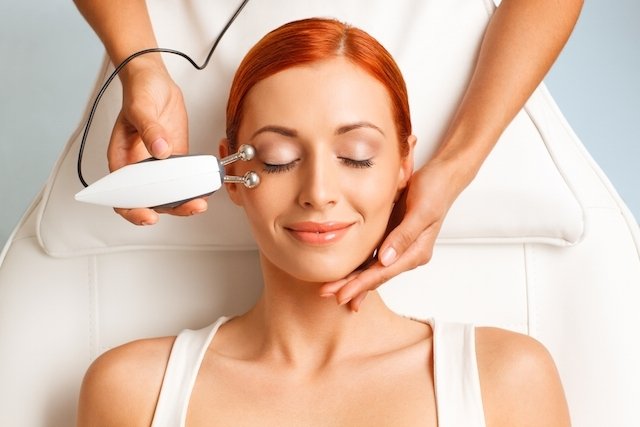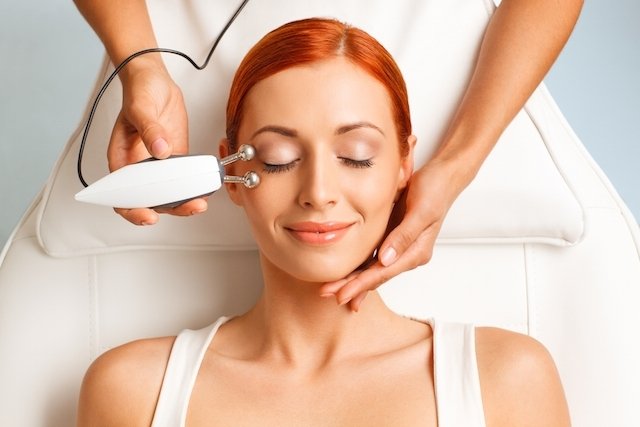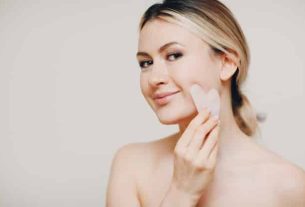Radiofrequency is an aesthetic treatment that promotes an increase in the temperature of the area to be treated with the aim of promoting the production of collagen and elastin, being very effective in eliminating wrinkles, expression lines and even localized fat and cellulite. , being a safe method with lasting effects.
The radiofrequency device raises the temperature of the skin and muscle to approximately 41ºC, promoting collagen contraction and favoring the production of more collagen and elastin fibers, giving more support and firmness to the skin.
Furthermore, the rise in temperature ruptures the membranes of fat cells, causing them to be eliminated from the body. The results can be observed in the first few days after the first session and the result is progressive, and therefore, the more sessions the person does, the greater and better the results will be.

What is it for
Radiofrequency is an aesthetic procedure that serves to:
- Reduce wrinkles;
- Improve the appearance of the skin;
- Improve the quality and reorganize collagen and elastin fibers;
- Improve microcirculation;
- Improve skin hydration;
- Accelerate the elimination of toxins;
- Reduce cellulite;
- Combat stretch marks and fibrosis;
- Improve the appearance of scars;
- Combat fat located on the belly, culottes, flanks, arms, jowls;
- Combat sagging in any area of the body;
It is important that the person consults a beautician or physiotherapist specialized in radiofrequency or a dermatologist to check the indication for treatment and the number of sessions to be carried out.
Types of radio frequency
Radiofrequency can be applied to various parts of the body, with different indications according to the objective of the treatment, so the main types of radiofrequency are:
Facial radiofrequency
This type of radiofrequency is performed in cases of expression lines and wrinkles on the face, which may disappear on the first day of treatment. In the case of thicker wrinkles, from the 5th session onwards there will be a big difference. See more details about radiofrequency on the face.
Radiofrequency in the body
Body radiofrequency is a procedure that aims to eliminate localized fat and improve the appearance of the skin. When the objective is to reduce the volume of localized fat and treat cellulite, depending on its degree, 7 to 10 sessions may be necessary.
How it is made
Radiofrequency is a simple procedure that must be carried out by a trained professional, who applies a specific gel to the area to be treated and then the radiofrequency equipment is slid into place with circular movements, this favors the heating of elastic and collagen fibers. , which promotes greater firmness and elasticity to the skin.
Furthermore, as a result of the movements and heating of the region, it is also possible to stimulate the activation of fibroblasts, which are cells responsible for the production of collagen and elastin. After treatment, the applied gel must be removed and the area must be cleaned.
In the case of fractional radiofrequency, which is the most recommended treatment for eliminating wrinkles and expression lines on the face, the procedure is slightly different, because the device does not slide over the skin, but small jets are emitted, as if it were a laser in small areas of the face.
Despite being a somewhat expensive aesthetic treatment, it has fewer risks than plastic surgery, its results are progressive and long-lasting and the person can return to their normal routine straight away. A minimum interval of 15 days is recommended between each session.
Who can’t do
Radiofrequency is a safe procedure with low risks, however it should not be performed on people who do not have intact skin or who have signs and symptoms of infection or inflammation in the area to be treated.
Furthermore, it is not recommended for pregnant women, people who have hypertension, a pacemaker, metal prostheses in the region to be treated, diabetes or people who have changes related to increased collagen production, such as keloids, for example.
Possible risks of radio frequency
The risks of radiofrequency are related to the possibility of skin burns due to misuse of the equipment. As radiofrequency raises the local temperature, the therapist must constantly monitor whether the temperature of the area being treated does not exceed 41ºC. Always keeping the equipment in circular movements prevents overheating of a certain region, reducing the risk of burns.
Another possible risk of treatment is that the person will not be satisfied with the result because they do not have realistic expectations and it is up to the therapist to inform them about the effect of the equipment on the body. Older people who have a lot of wrinkles on their face and very saggy skin may have a younger face again, with fewer wrinkles, but it will be necessary to carry out a greater number of sessions.
Bibliography
- VIEIRA, Giovanna de Simone K. Importance of radiofrequency in aesthetic treatments: literature review. Specialization work, 2016. Pontifical Catholic University of Goiás – Department of Physiotherapy.
- CAVALERI, Tainah; SILVA Juliana S.; DIAS, Camila et al. Benefits of radiofrequency in aesthetics. Management in Focus Magazine. 211-239,
- TAGLIOLATTO, Sandra. Radiofrequency: non-invasive method for treating sagging skin and body contouring. Surg Cosmet Dermatol. Vol 7. 4 ed; 332-338, 2015





